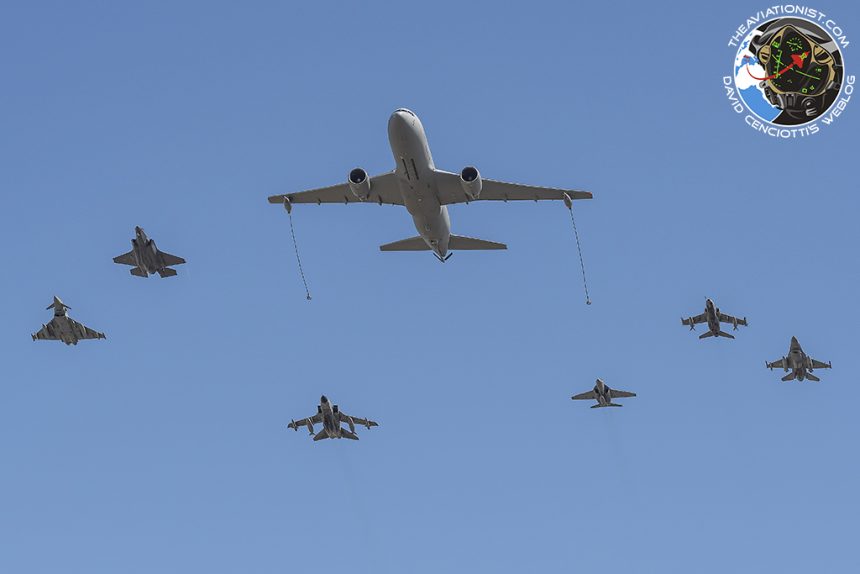U.S. Marine Corps and Hellenic Air Force aircraft have joined Italian Air Force F-35, T-346, Typhoon, CAEW and many other Italian assets involved in Joint Stars 2019.
From May 13 to 31, 2019, dozens of land, naval and amphibious vehicles, 25 aircraft and over 2,000 military belonging to the Italian Air Force, Navy, Army, operated in the training areas of Sardinia, Italy, as part of the live phase (LIVEX) of Exercise Joint Stars 2019 (JS19), Italy’s largest joint drills this year.
Joint Stars series of exercises was designed to train commands and forces on the various types of missions that could be required in future national, multinational and coalition operations and is “a valuable opportunity to achieve, through the joint training of the Italian Army, Navy and Air Force synergy and economies, as well as to share resources and maximize interoperability in the Defense field, refining the capacity for intervention with a joint force.” Just like the previous edition of the exercise, that was held in May 2018, the scenario this year included operations conducted within an environment degraded by cybernetic and chemical-biological and radioactive threats (CBRN).
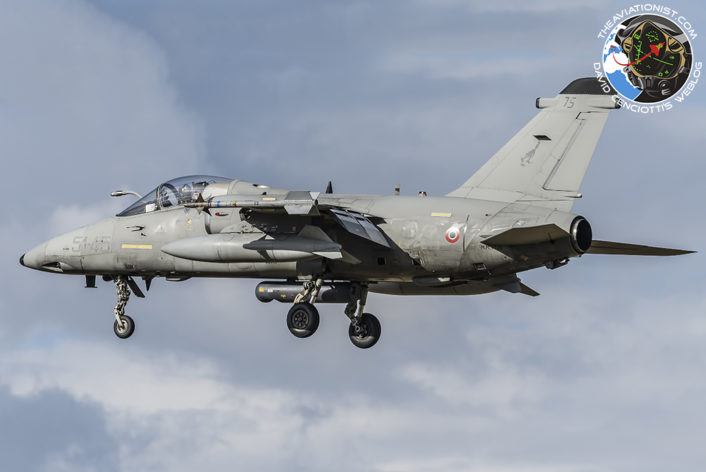
During JS19, the Italian Air Force had the C2 (command and control) authority on all participating air assets. This role was carried out by redeploying an Air Component Command (ACC) to Decimomannu DOB (Deployable Operating Base) with the aim of assigning specific tasks to each aircraft and verifying their correct execution during the missions. Through the Tactical Control Agencies (TAC C2) the Air Force also controlled and coordinated all the missions with the civil ATC (Air Traffic Control), to optimize the use of training areas and to significantly reduce the “footprint” of the military activities on the region’s air traffic. More specifically, the tactical control of the assets was ensured by: the Italian Deployable Air Control Center; the Recognized Air Picture Production Center and Sensor Fusion Post (IT-DARS) of the RMCC (Reparto Mobile di Comando e Controllo – Mobile Command and Control Unit); the G550 CAEW (Conformal Airborne Early Warning) aircraft of the 14° Stormo (Wing) from Pratica di Mare; and by the 22nd GRAM (Gruppo Radar AM – ItAF Radar Squadron) based in Licola, near Naples.
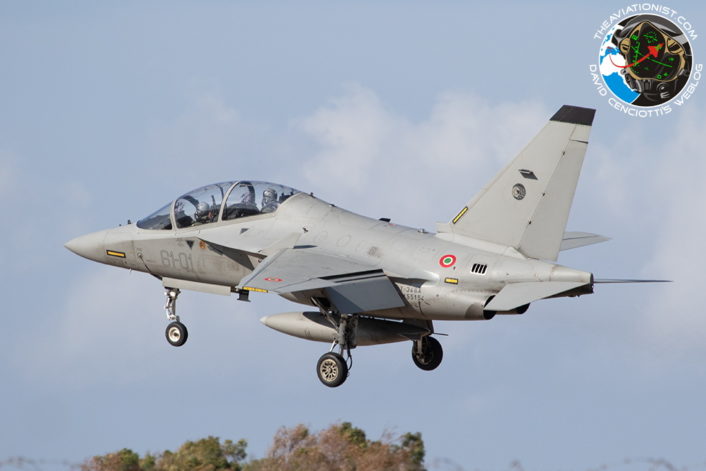
Decimomannu airbase hosted most of the tactical aircraft (ItAF Tornados, AMXs, T-346s), the P-72A Maritime Patrol Aircraft, and the HH139 and HH101 helicopters. Also based there Hellenic Air Force F-16s belonging to the 336 Sqn “Olympus” and U.S. Marine Corps MV-22 Osprey tilt-rotor and KC-130J aircraft, that took part in the airdrop onto the airfield and in a large Joint Personnel Recovery mission. Supporting the drills were also assets from the Marina Militare (Italian Navy), Esercito Italiano (Italian Army), Carabinieri (CC, Military Police) and Guardia di Finanza (GdF, Custom Police) as well as a NATO Da-20 EW (Electronic Warfare) aircraft, whose role was to degrade the effectiveness of the interceptors radar and radio systems by using radar jamming and deception methods.
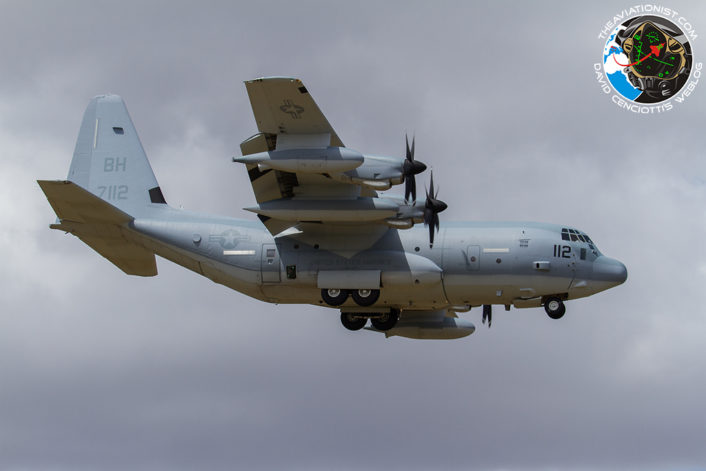
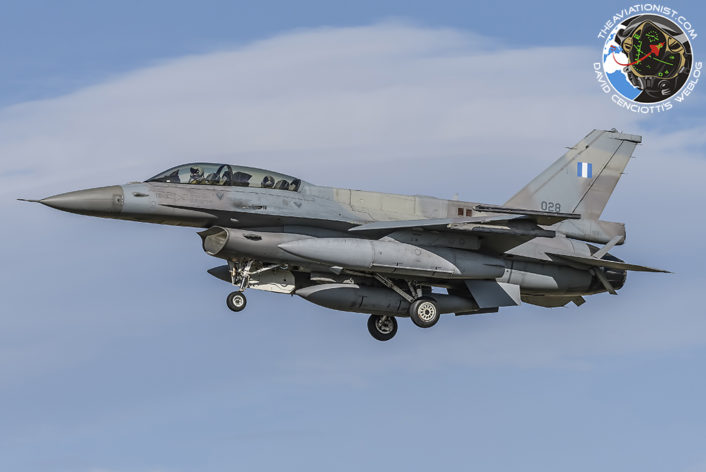
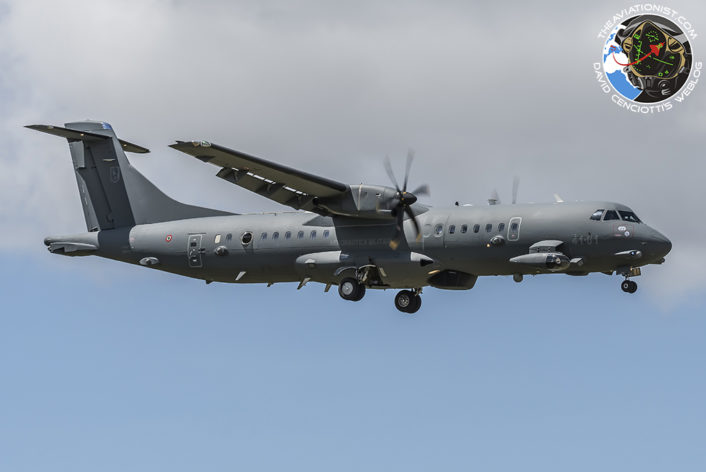
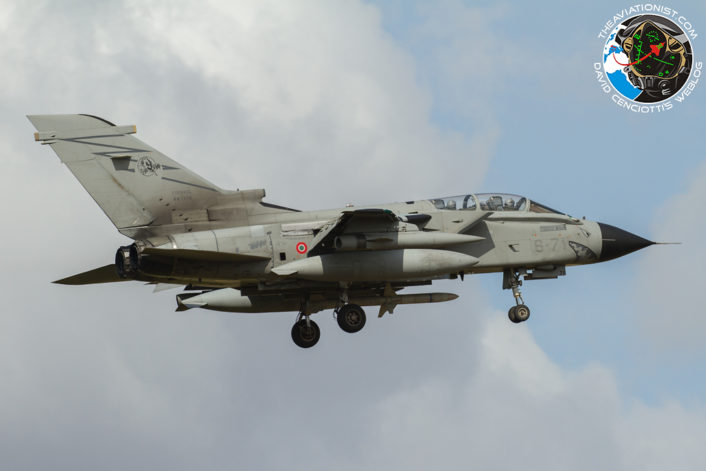
Many other assets, including the Eurofighter Typhoons of the 4°, 36° and 37° Stormo, operated from their homebases at Grosseto, Gioia del Colle and Trapani, with the latter base, in Sicily, hosting also a deployment of F-35A Lightning II stealth aircraft from the 32° Stormo, based at Amendola.
The latter have carried out several different types of mission, including BAI and CAS in cooperation with JTACs.
The C130Js and C27Js belonging to the 46^ Brigata Aerea (Air Brigade), carried out personnel and material transport, special forces bio-containment activities and bio-containment medical transport missions, from Pisa; the KC-767 tankers with the 14° Stormo conducted AAR (Air-to-Air Refueling) operations from Pratica di Mare; Predator remote piloted aircraft belonging to the 32° Stormo operated from Amendola.
A tactical demo was the highlight of the Distinguished Visitor Day (DVD) organized at Decimomannu and attended also by Italy’s Minister of Defense Elisabetta Trenta and the Joint Chief of Staff, Gen. Enzo Vecciarelli. The event lasted about 45 minutes and involved all the air arms taking part in the Exercise.
The demo started with the simulation of the pursuit of thugs trying to flee in a car. Intercepted by custom police patrols supported by a GdF AW-139 and an ATR 42-500MP, the two, forced to stop and rendered harmless, were taken on board the service cars while canine units carried out the search of the vehicle used for the escape, an operation that ended with with the seizure of the car.
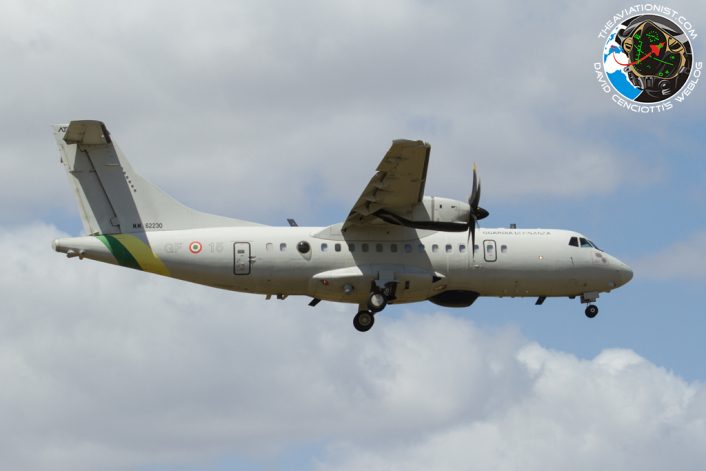
The subsequent phase saw the U.S. Marine Corps KC-130J and the Italian Air Force C-130J airdropping paratroopers on the enemy territory as part of a simulated infiltration operation. Real airdrops have a certain degree of risk as proved by the injury occurred to one of the paratroopers that required a real rescue operation to be carried out alongside the simulated one that was foreseen as part of the tactical event.
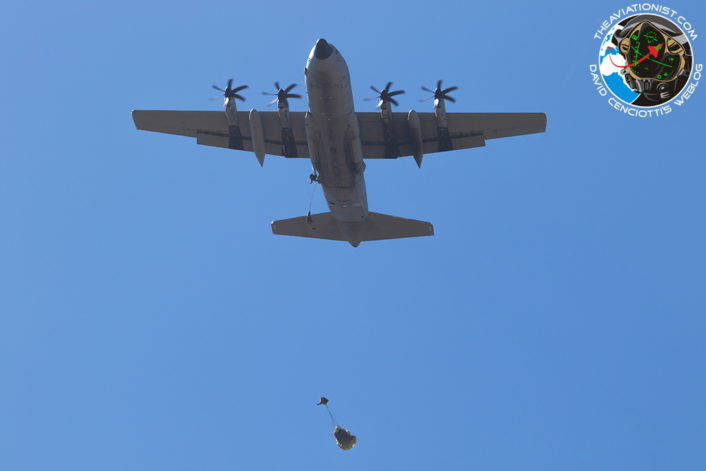
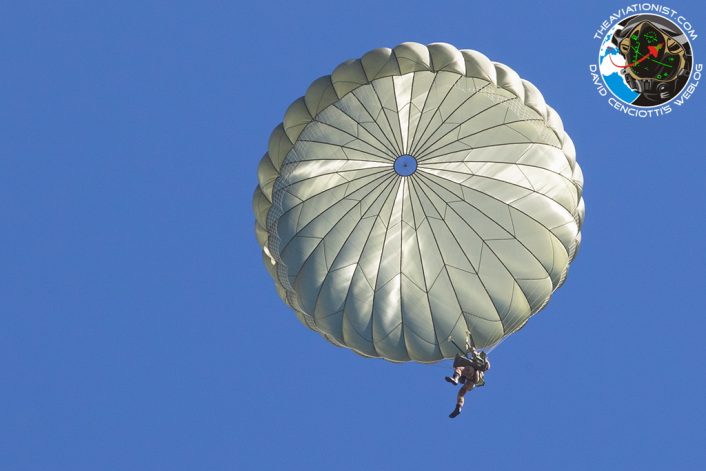
The next phase saw the infiltrated troops engage enemy a firefight, as tactical aircraft provided aerial coverage and performed several show of force passes over the battlefield.
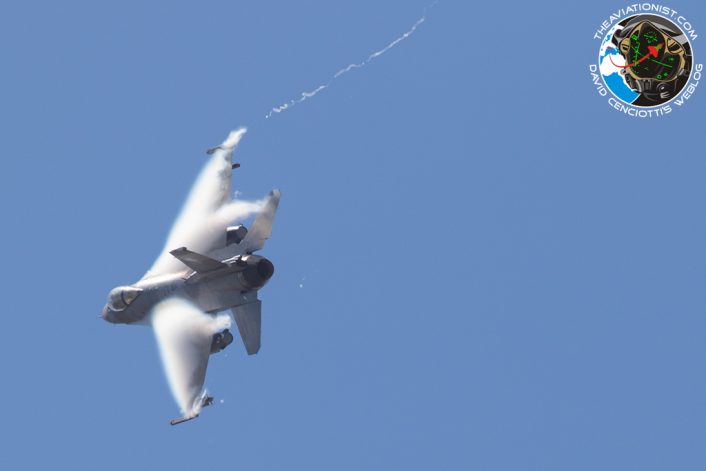
A second infiltration operation was then carried out by a USMC MV-22 Osprey that landed to disembark the troops while Carabinieri AB-412, Italian Navy EH-101 and Italian Army CH-47 helicopters conducted fast-roping. Italian Army AW-129 Mangusta gunship helicopters provided close support.
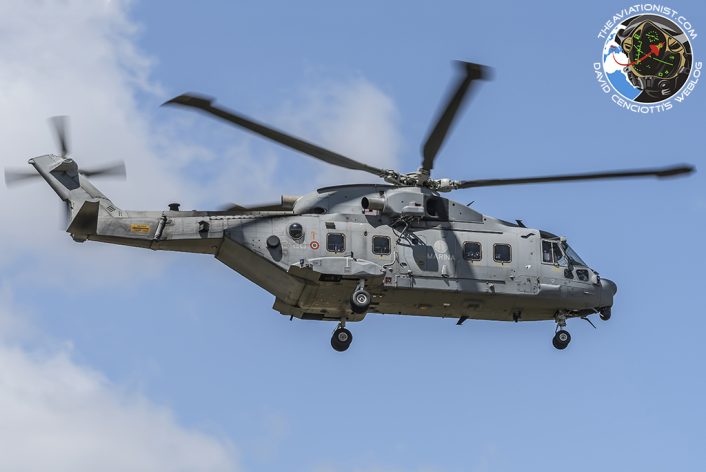
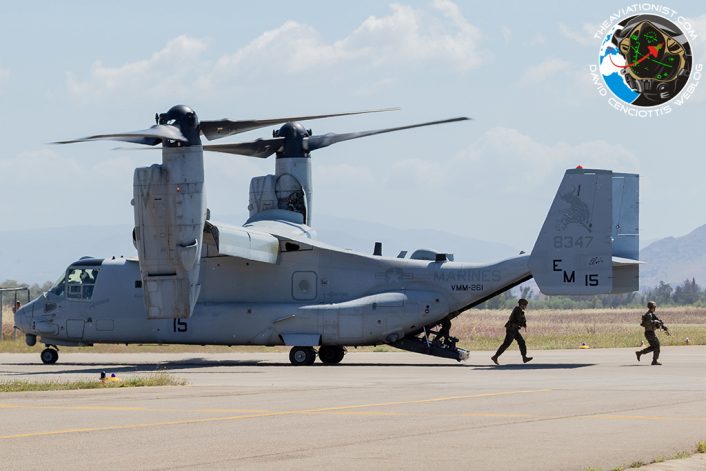
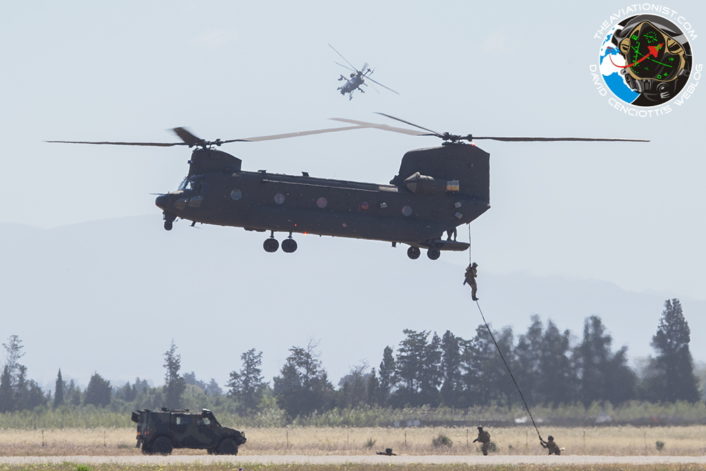
This was the last phase of tactical event. The demonstration came to an end with the repositioning of the troops in front of the authorities, that was followed by the overflights of the aircraft taking part in the exercise. BTW, a demo that included some tactical events was also carried out at Pratica di Mare airbase to show the ability of the Italian military assets to be used for both military and civilian operations last month.

